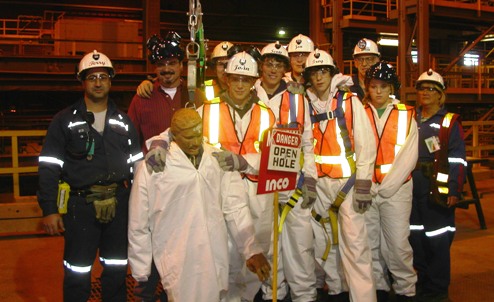Marilyn Scales is a field editor for the Canadian Mining Journal, Canada’s first mining publication. She is one of Canada’s most senior mining commentators.
Residents of northern Ontario, and Sudbury in particular, are furious with the funding of a new mining innovation centre in Toronto rather than where the industry operates. The $20-million centre will be built at the University of Toronto and named after Pierre Lassonde, president of Newmont Mining. The federal and provincial governments are each putting up $5.5 million. The balance will come from private donations, and Lassonde is said to be the largest donor.
What makes the deal such a bitter pill for northern residents to swallow is that it sets up a new mining innovation centre in direct competition with the Centre for Excellence in Mining Innovation (CEMI) already established in Sudbury. The new institute’s mandate is reported to be the same as CEMI, its name is so close as to be confusing, and its technology will duplicate what is already available.
“The decision by the federal government to deny funding to CEMI is a deliberate, calculated snub to the city of Sudbury, its provincial member [Rick] Bartolucci … and, most assuredly, [FedNor executive director Louise] Paquette,” Michael Atkins, president of Northern Life, wrote in that newspaper last week. “The willingness to quickly invest in a competing institution in Toronto just adds incredulity to the inside story.
“Either Sudbury sees its future as an international mining cluster, or it doesn’t. There will be no help from the province unless you demand it. There is a choice. Cower in the corner praying for the next grant or demanding the respect that is due a cluster that is more respected in Argentina, South Africa and Australia than it is in its own province,” he concluded.























 In 2008, for the first time in human history, more than half of the global population will be living in cities. The planet is undergoing the largest wave of urban growth ever, spearheaded by the massive migration of Chinese farmers to their cities.
In 2008, for the first time in human history, more than half of the global population will be living in cities. The planet is undergoing the largest wave of urban growth ever, spearheaded by the massive migration of Chinese farmers to their cities. Imagine yourself in Grade 12 again. What do you remember? Did part of your schooling include visiting an underground mine and witnessing the various career opportunities available there? Do you remember receiving certification awareness training at a local employer, alongside other workers in the plant? Upon graduation, were you able to say that you had the skills and knowledge to pursue your postsecondary destination of choice, had spent time shadowing the types of jobs you were interested in, and had acquired a number of certifications that made you more appealing to employers?
Imagine yourself in Grade 12 again. What do you remember? Did part of your schooling include visiting an underground mine and witnessing the various career opportunities available there? Do you remember receiving certification awareness training at a local employer, alongside other workers in the plant? Upon graduation, were you able to say that you had the skills and knowledge to pursue your postsecondary destination of choice, had spent time shadowing the types of jobs you were interested in, and had acquired a number of certifications that made you more appealing to employers?